Art school "IGUM" in Rehovot
Go to the base activity page
The educational activities of the art school are aimed at involving children aged three to fourteen in the process of creative understanding of the world around them in all its manifestations. The training is carried out in stages, in accordance with the child's age, their intellectual development, and the level of interest in art.
Graduation exhibitions of students have become an event in the cultural life of the city for many years. The goal of teaching fine arts is, first of all, to teach professional skills in various types of art, as well as to provide talented children with the opportunity to master various artistic techniques and modern materials.
Training program
The main direction of teaching is special training in one or several types of art, similar to Art Schools. Such training provides deep and solid knowledge of the fundamental principles of fine art in their classical version.
Painting, drawing, composition and the knowledge corresponding to them, the ability to see, feel, and understand the beauty of the surrounding world more subtly and deeply - this is the main set of tasks that the school team sets for itself. The curriculum is based on the classical tradition of the Russian school of painting. Our program differs from the general concept of Israeli art education. It follows entirely from certain philosophical and aesthetic teachings and, in general, from the cultural model of development of classical European art.
The classical school "keeps" the student within certain frameworks of the educational system and, at the same time, brings his training in the language of art (mainly realistic) to perfection.
The students have excellent professional skills in the field of visual means, and the teachers prove to them the possibility of the relationship and mutual understanding of the two existing models: classical and modernist, and "... this seems relevant in light of new trends in the development of postmodernist art. Its tolerance and diversity bring back the need for a classical school, easel painting, figurative compositions, conceptual thinking in general, which requires freedom and originality of thinking from the future artist, as well as a certain clarity in the means of expression, that is, they require from the training of that very “school”, the traditions of which are carried by teachers from Russia.” - These are the words of the late Grigory Ostrovsky, Doctor of Art History, Professor.
The teaching methodology provides students with the opportunity to determine for themselves the range of interests in this type of art, the choice of the closest direction: graphics, painting.
The program includes age stages:
3 to 4 years old – 30 minutes once a week
4 to 5 years old – 2 lessons of 30 minutes once a week
5 to 8 years old – 2 lessons of 45 minutes once a week
8 to 10 years old – 2 lessons of 45 minutes once a week
10 to 14 years old – 2 lessons of 45 minutes 2 times a week
The first 3 stages (preparatory) help develop the child’s sense of form, color, introduce the basics of painting and drawing techniques, composition, and the basics of modeling.Based on extensive experience, a specific method for involving children in the process of creative work has been chosen, where the basis is the child’s natural need to express their understanding of the world through the most accessible means – an image of what they have seen. With children under 8 years old, the establishment of a strong connection between the child’s brain and hand is practiced, i.e. the development of the tool control center. As a rule, this connection is absent even in the most gifted children, i.e. it is achieved only by targeted and sufficiently long training and exercises. Drawing straight lines between points, lines of a given curvature, sequential drawing of parallel lines with an increase in their length. The school has accumulated a large number of such exercises developed by its teachers. These tasks allow the child to develop an eye. Next comes familiarization with the color system in watercolor and gouache paints.
Initially, students should be absolutely free in choosing a composition and color scheme, then gradually the teacher begins to involve them in the process of completing specific tasks due to the topic, however, drawings on a free theme remain mandatory for the entire period of study. The main thing in this is to pay special attention to the depiction of nature in its various manifestations and states. By the end of the training, it is necessary to give assignments for the execution of simple still lifes and compositions with geometric shapes.
Along with paintings, graphic works are also performed on white or colored paper with pastels, chalk and charcoal. These works are less picturesque, but they allow a more strict approach to compositional issues. In this age group, classes in small plastic arts, i.e. modeling volumetric forms and figures, should be necessary. These tasks develop children's spatial thinking, skills in modeling images in three dimensions - which is extremely necessary for the entire process of learning painting.
The basis of our methodology is the sequence
transition from one age group to another, which maintains continuity and a gradual increase in knowledge and skills.
The final stage of training - from 10 to 14 years and older allows you to complete the educational process at a high creative and professional level. Over the course of 4 years (680 hours), students acquire a volume of knowledge and skills that allows them to cope with tasks of any creative and technical complexity. At this stage, the following disciplines are studied:
Construction of spatial compositions
Modeling volumes using light and shadow
System of constructing shadows on a plane
Perspective. Construction of objects in perspective
Painting technique of watercolor, its reflexes and color
Graphic works with charcoal and pastel
Draperies. Types of folds and their image
Drawing plaster. Drawing of parts of the human body and the whole figure
Human body structure: skeletal bones, muscles
Drawing a person from life: pencil, charcoal, pastel
Picturesque depiction of life (watercolor, gouache)
Oil painting techniques: still life, landscape, nature
Plein air. Drawing a landscape using various techniques
Throughout the entire period of learning painting techniques, every third or fourth work is a work on a free theme, which is a necessary condition for developing the student's creative imagination, developing his artistic individuality.Exhibitions
From the many years of practice of the School, an urgent need was derived to organize exhibitions of students' works, which is carried out at least once every six months. Such a number of exhibitions allows the students themselves to have constant motivation for interesting creative work, as well as a significant interest in the visual arts, as a possible future profession or the application of the acquired knowledge in any other activity.
Groups for adults
The school has opened painting training groups for adults.
| ул. Левин Эпштейн, 29, Реховот | |
| https://www.facebook.com/egoomart | |
| http://e-goom.co.il/centers/535hud-shkola/ |


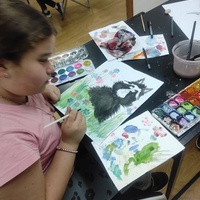
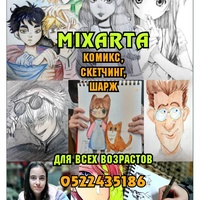
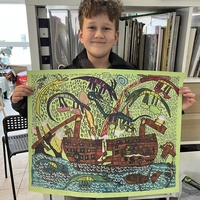
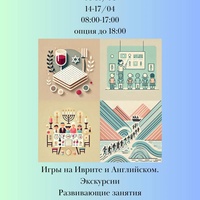
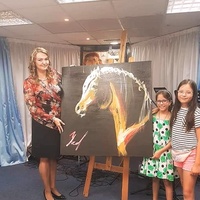
https://www.all4kids.co.il/en/ads/674-khudozhestvennaia-shkola-igum-v-rekhovote/